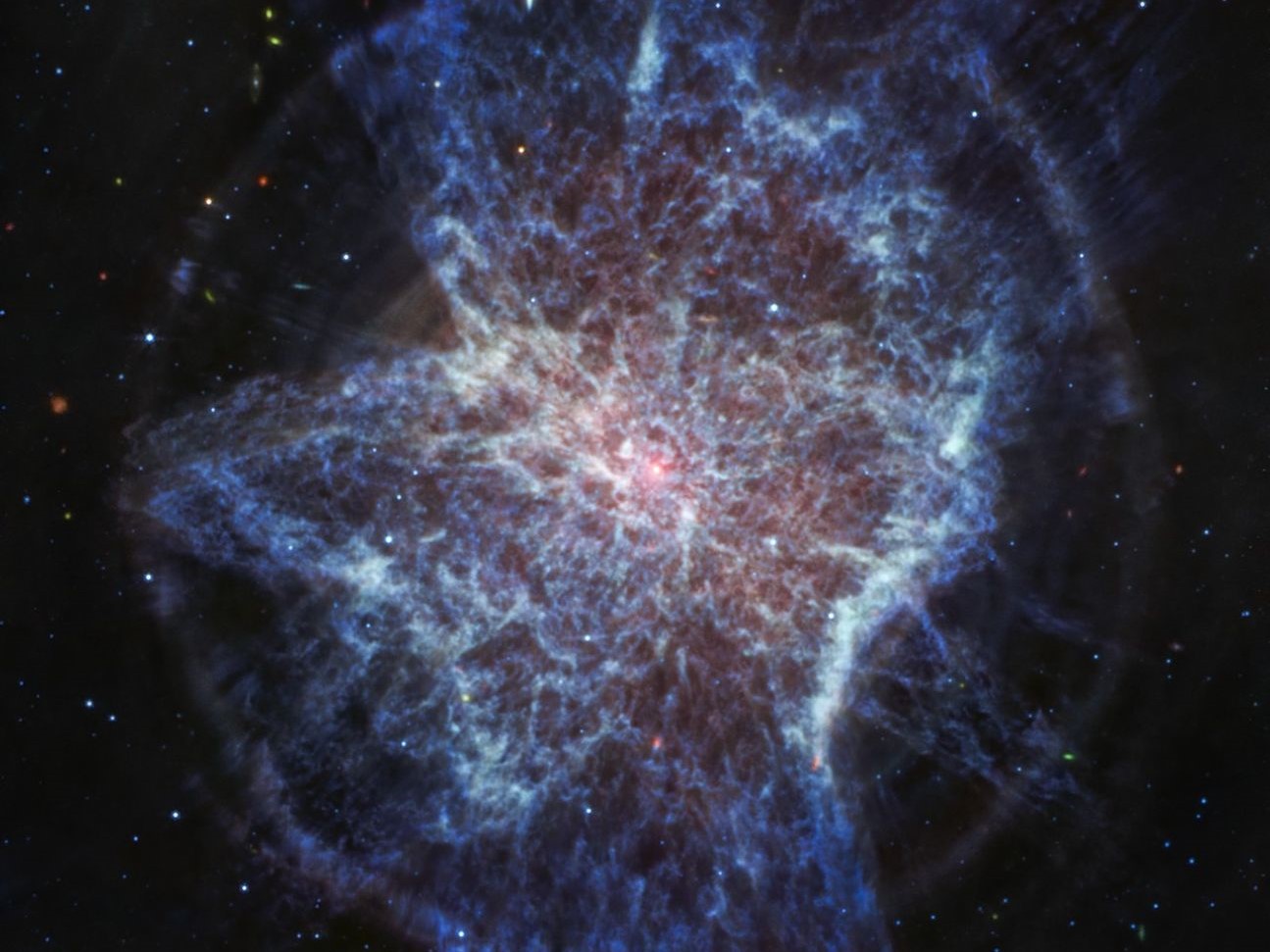The concentric rings, expanding from the central region, as revealed by Webb’s MIRI (Mid-Infrared Instrument), may offer further evidence of a secondary star at play. The rings suggest there was some form of pulsation that caused gas or dust to be released evenly in all directions, possibly thousands of years apart.
Another striking detail captured by Webb’s MIRI is a small pinkish-white dot in the center, believed to be the star shaping this entire scene. Over time, as the central star cools and dims, the nebula will slowly disperse into the interstellar medium, enriching it with heavier elements that could one day help form new stars and planets.
By capturing such a detailed view of NGC 6072, Webb paves the way for studies into how complex planetary nebulae help feed the nurseries where new stars and planets are born. The James Webb Space Telescope is no stranger to new discoveries, it recently helped NASA correct a wrong notion regarding Uranus.
NGC 6072 is located about 3,000 light years away, which means it is visible through a telescope. However, you will need a powerful telescope, like the Celestron NexStar 8 SE (curr. $1,699.99 on Amazon), which has a 203-mm (8-inch) aperture. Keep in mind you will need good viewing conditions — a dark sky with minimal light pollution.
